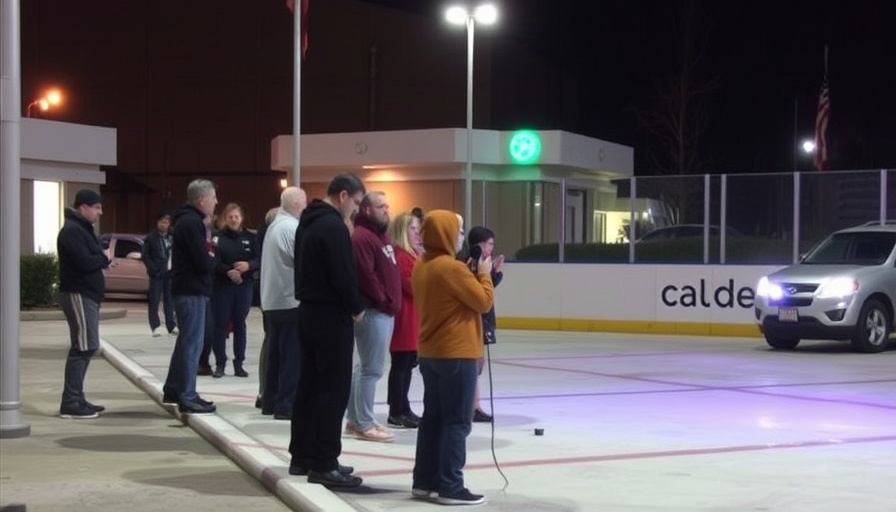
A Touching Vigil for Jackson Trese
This past Saturday evening, members of the Dallas hockey community gathered outside the Children’s Medical Center to pray for 13-year-old Jackson Trese, affectionately known as "Little Tree." He remains hospitalized after being struck by a car at Inwood Road and Northaven Road on June 26.
A Community United in Support
The scene outside the hospital was one of unity and love, as players, families, and friends from across Dallas – including both teammates and competitors – showed up to express their support. With hockey sticks in hand, they signed cards and shared well-wishes for Jackson, a dedicated lover of the game and a goalie for one of the city’s traveling club teams.
Jackson's Importance to His Peers
Family friend Waldo Gonzalez described Jackson as the kind of kid everyone wants in their lives – supportive, kind-hearted, and always there for his teammates and family. Gonzalez emphasized the importance of this collective support not just as a response to tragedy, but as a celebration of the kind of person Jackson has always strived to be.
Understanding the Incident
The details surrounding the unfortunate incident suggest it was a tragic accident; the vehicle's driver stopped and stayed at the scene, a critical action indicating concern. Jackson’s family and friends know this is a tough battle ahead, and they remain hopeful that each tiny improvement will be a significant step on the road to recovery.
Current Events and Community Response
The hockey community's response reflects broader themes of unity in the face of tragedy. Young athletes often look to their peers not only for competition but for guidance and support during difficult times. This event serves as a poignant reminder of how tightly-knit communities can uplift one another.
Why This Matters
Situations like Jackson's spark conversations about road safety, particularly when it comes to protecting young pedestrians. As communities reflect on how to better ensure the safety of children, awareness and proactive measures will be crucial. Everyone, especially in sports-driven communities, must recognize their responsibility in keeping each other safe.
The Role of Sports in Community Building
This incident resonates deeply within the realm of youth sports and camaraderie. It illustrates how sports can create not just athletes but also role models, leaders, and a sense of responsibility. Families involved in youth sports often form bonds that extend beyond the rink, creating lifelong friendships and support systems.
Your Path Forward: Supporting a Young Athlete
If you wish to support Jackson's recovery or assist similar causes in your area, consider participating in local events organized to raise awareness or funds for youth athlete safety. Every small effort counts in creating a more caring world for our young athletes.
As the Dallas hockey community continues to stand by Jackson and his family, it’s essential to reflect on the values we embody—friendship, support, and love. The path to recovery may be long for Jackson, but each prayer, message, and supporting presence speaks volumes about the strength found in community.
 Add Row
Add Row  Add
Add 




Write A Comment